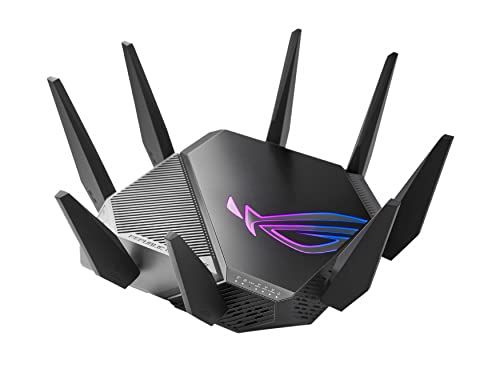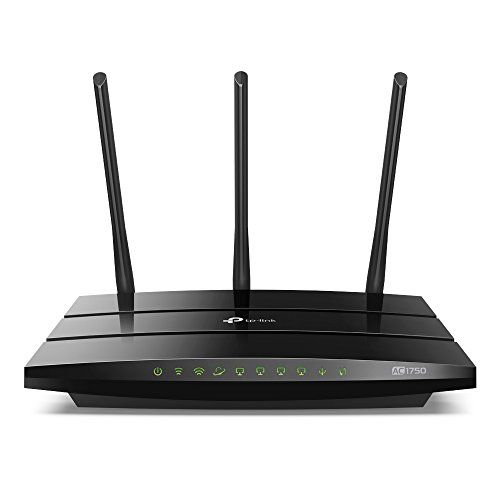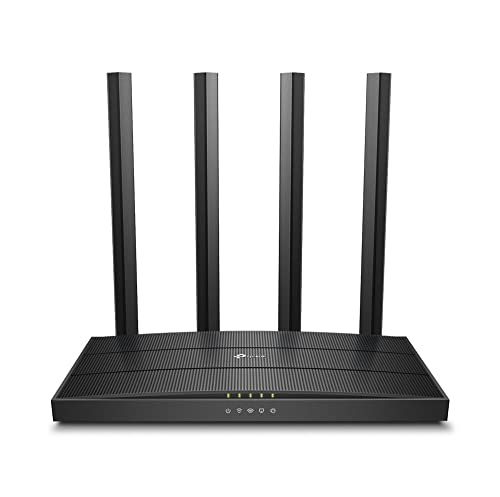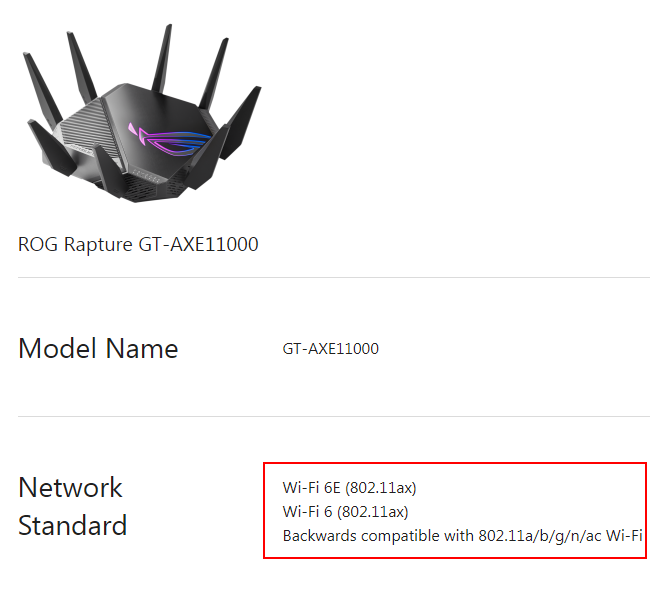Quick Links
A fast and reliable router is a necessity in most households. But, do you really need to spend over $100 on a Wi-Fi router with six antennas and Wi-Fi 6? It's time to understand those mind-boggling specs.
Wi-Fi Standards
Choosing a router can feel somewhat overwhelming, especially when jargon gets thrown at you left, right, and center. One of the most important router specs to consider is the supported Wi-Fi standard. You've probably seen references to 802.11ac or 802.11ax when searching for a router. These are known as Wi-Fi standards.
The first Wi-Fi standard, 802.11, was released in 1997, supporting radio frequencies of 2.4GHz. It supported mere megabits per second (Mbps), followed shortly by 802.11b in 1999. In the same year, the 802.11a Wi-Fi standard was launched, offering support for 5GHz bands up to 54Mbps.
The most common Wi-Fi standards today are 802.11ac (Wi-Fi 5), and 802.11ax (Wi-Fi 6 and Wi-Fi 6E). The main difference between Wi-Fi 6 and Wi-Fi 6E is that Wi-Fi 6 supports 2.4GHz and 5GHz frequencies, whereas Wi-Fi 6E supports 2.4GHz, 5GHz, and 6GHz frequency bands.
But how do you know which Wi-Fi standard to choose? Well, it's dependent on whether the devices you own support Wi-Fi 6 or not. Smartphones like the iPhone 11 and above, Samsung Galaxy S20 and above, the OnePlus 8, and so on, support Wi-Fi 6. As Wi-Fi 6 became the new standard in 2019, most tech manufacturers started creating devices that support the standard.
If you own mostly older devices, pre-2019, you'll find an 802.11ac router suitable for your needs; Wi-Fi 5 is also backward compatible with 802.11a/b/g/n standards and can reach speeds of up to 1300Mbps on the 5GHz band and 450Mbps on the 2.4GHz band.
However, Wi-Fi 6 routers are also backward compatible. Thus, you'd be investing in a future-proof router that is capable of supporting Wi-Fi 6-enabled devices. Wi-Fi 6 uses less power than Wi-Fi 5, offers better security, higher speeds, and is generally more reliable in busier environments.
If you're buying your first router or upgrading your existing one, it's definitely worth opting for 802.11ax; any devices that support Wi-Fi 5 or lower will still be able to connect wirelessly to the router. One of the most powerful routers available, the ASUS ROG Rapture GT-AXE11000 supports the 802.11ax Wi-Fi standard but is also backward compatible with 802.11a/b/g/n/ac.
While it's incredibly expensive, it covers all bases of Wi-Fi standards, meaning you could use it with almost any Wi-Fi-supported device.

ASUS ROG Rapture WiFi 6E Gaming Router
This powerful gaming router supports the Wi-Fi 6E standard, tri-band frequencies, and boasts a 1.8GHz quad-core CPU.
Transfer Rates
It's tempting to buy a router that boasts speeds of 1750Mbps or more, but don't let that fool you into thinking those speeds are an accurate representation of what you'll actually get. Yes, it's a good idea to invest in a router that's capable of high speeds, especially if your ISP and internet package can deliver these, but you don't need to put all of your eggs into a basket that doesn't come up with the goods.
The TP-Link AC1750, for example, indicates it can offer speeds of up to 1750Mbps (the numbers after the "AC" part of the name can usually, but not always, tell you the router's maximum speed). When you drill down into the router's specs, you'll see that it offers up to 1300Mbps on the 5GHz band and 450Mbps on the 2.4GHz band. Add them together and you get 1750Mbps.
However, a device can't receive both frequencies at the same time. Thus, the maximum capable speed the TP-Link AC1750 could offer at any given time is 1300Mbps. And, unless you receive a flawless internet connection from your ISP and your devices are located in a laboratory-style environment, you'll probably get much less than the stated 1300Mbps speeds.
That's not to say you should shy away from routers that have these kinds of specs, it's just important to understand what they mean.

TP-Link AC1750 Smart WiFi Router (Archer A7)
A dual-band Wi-Fi 5 router with up to 1300Mbps (5GHz) and 450Mbps (2.4GHz), parental controls, and compatibility with Alexa.
Number of Ports
To leverage the fastest speeds from your router, we recommend opting for a wired connection via an Ethernet cable from your router to your device. However, not all routers have multiple Ethernet ports. Depending on your requirements, you may need to invest in a router with at least one or more Ethernet ports.
Whether you're working from home or gaming in your bedroom, a reliable internet connection is best served wired. But, the issue many users face is how to achieve a wired connection from a single Wi-Fi router.
If you need to connect multiple devices via a wired Ethernet connection, an option could be to invest in a Mesh Wi-Fi system. Most Mesh Wi-Fi routers include at least one Ethernet port on the main router, and often two or more on the individual nodes (satellites). The Google Nest Wi-Fi router includes two Ethernet ports; a two or three-pack also contains two ports on each router, allowing you to rig up a wired internet connection to many of your household devices.
However, if you're set on a router that doesn't have enough Ethernet ports for your needs, you could invest in an Ethernet Switch, like the Netgear Switch (GS305). It uses one Ethernet port to connect to your router, then offers four additional Ethernet ports, allowing you to connect multiple devices like your game console, TV, printer, and computers, via an Ethernet connection.
MU-MIMO
Multiple-User, Multiple-Input, Multiple-Output (MU-MIMO) technology allows a router to deliver Wi-Fi to multiple devices simultaneously. This means a single device doesn't have to wait longer for a signal, speeding up your overall network. With a traditional Single User, Multiple-Input, Multiple-Output (SU-MIMO) router, network bandwidth is allocated on a priority basis, delivering multiple streams of data to one device at a time.
To translate this into something meaningful, if you load up a YouTube video on your PC and your housemate wants to watch something on Netflix, one of your devices will display the content before the other, thanks to SU-MIMO. In real-world terms, the delay is very marginal. But if you used a router with MU-MIMO, both devices would receive the same Wi-Fi bandwidth at the same time, causing no delays.
MU-MIMO was seen first in Wi-Fi 5 routers and is more commonplace in Wi-Fi 6 routers. However, not all routers support MU-MIMO. If you have a large household with multiple devices that require a Wi-Fi connection, then an MU-MIMO-supported router is worth considering since no single device will be prioritized over the other. The more users you have on a SU-MIMO network, the more you'll notice the difference.
Security Standards
Whether you think it's possible for a hacker to gain access to your router or not, a router's security specs should be a vital consideration. WPA2, developed in 2004 by the Wi-Fi Alliance, is the absolute minimum security standard you should look for in a router.
WPA2 uses the Advanced Encryption Standard (AES). While this is an incredibly efficient and secure way to protect your router and your network, it does have its flaws. For example, if someone were able to gain access to your network, they could attack or potentially hack other devices connected to the same network. To combat this, WPA3 was developed in 2018.
WPA3 not only makes it more difficult for hackers to attack your network, but each device also has a separate decryption key that's connected to a router with WPA3 security. Even affordable Wi-Fi routers like the TP-Link AC1200 are available with WPA3 security protocols, so you don't need to spend a fortune to receive exceptional security specs in your Wi-Fi router.

TP-Link AC1200 Gigabit WiFi Router (Archer A6 V3)
This dual-band router offers multiple Wi-Fi standards, security protocols, and supports MU-MIMO for reliable speeds.
Choosing Your Router
There are many Wi-Fi router specs to wrap your head around, but once you've nailed your priorities, it can become a lot easier to weed out additional technologies that aren't necessary.
Deciding on your router's minimum Wi-Fi standard first should allow you to filter out any options that aren't going to serve your needs. From there, you can pick a router with sufficient transfer rates, available ports, advanced technology like MU-MIMO, and one that meets your security requirements.


